
WWI Education Day
Program Guidelines:
Following opening exercises students rotate through 8 to 10 stations. Each station presents a unique topic of interest related to The First World War. Many of these stations offer hands-on activities. Students spend approximately fifteen minutes at each location.
Material content corresponds to Ontario Grade 10/11 History Curriculum. The day is also relevant to senior elementary school level History. Our program is recommended for grades 8 - 12.
Students
are asked to dress according to the weather and need to know that they
may get dirty. No flip flops or open toed footwear. If it looks like
rain be prepared for it.
There is a lunch break built into the day but generally there is no food available for purchase on site.
Not all activities or stations may be wheelchair accessible due to the nature of the grounds.
We ask that our presenters be treated with respect and that care is taken on site due to the sensitive nature of the buildings and artifacts.
Station topics currently include a mixture of the following:
WWI Fashion Show
Our First World War fashion show features soldiers from Canada, Great Britain, France, Germany, Russia, and the United States. Civilian impressions include the Suffragettes, Women’s Land Army, and Belgian refugees.


Battalion Drill
Included in our opening exercises is a session of Battalion Drill. Just the thing to instill a sense of military bearing and set the atmosphere for the remainder of the day!

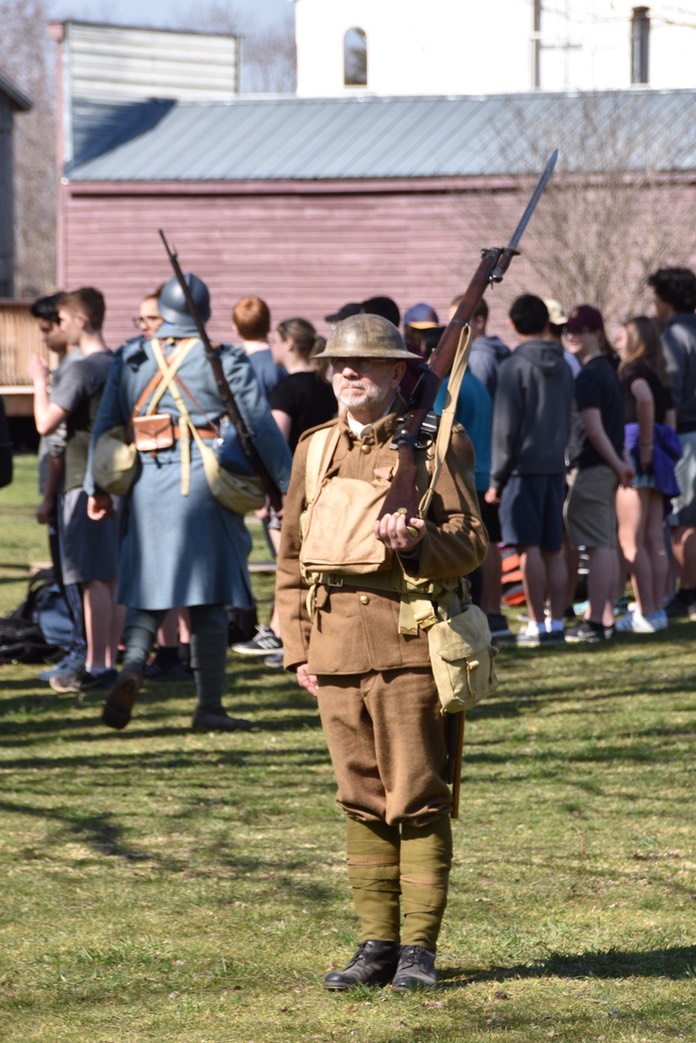
The Art of the Trench Raid
Canadian soldiers were often credited with fine-tuning trench raid tactics. Primary goals of a trench raid included keeping the enemy off balance, inflicting damage on an opposing trench system, and gathering intelligence.


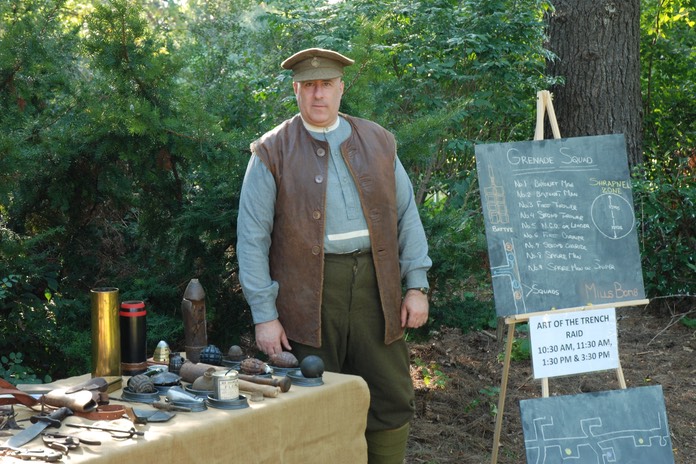

Canadian Nursing Sisters / Casualty Clearing Station
Canadian Nursing Sisters (nicknamed 'Bluebirds' due to their colourful uniform) played a crucial role in the treatment of battlefield casualties throughout the war. This station may also feature walking wounded and auxiliary medical personnel.
Unlike the British system, Canadian Army Medical Corps Nursing Sisters were granted the rank and pay of lieutenants and matrons the rank of captain. Nurses had to be single, 21 to 38 years of age, physically fit and a graduate of a three-year course at a recognized general hospital. Canadian nurses went to England, France, Salonika, Mudros, Russia, Egypt and Gallipoli. They served on hospital ships and on ambulance trains as well as in Casualty Clearing Stations, general hospitals, and convalescent centres. 2500 Canadian Nursing Sisters served overseas.
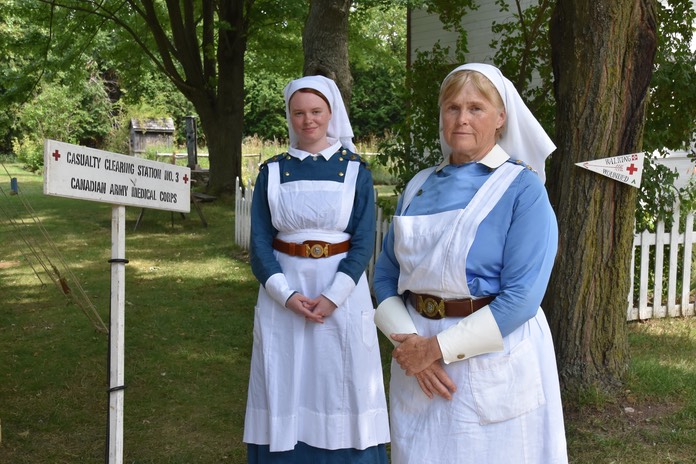

Stretcher Bearer
Stretcher bearers were the battlefield medics of WWI. Tasked with providing immediate first aid treatment to the wounded they evacuated casualties from the battlefield. As non-combatants Canadian stretcher bearers carried no weapons, unlike their German counterparts who could be armed at the discretion of their Commanding Officer. Bearers often faced overwhelming circumstances in which to care for the wounded. At the outset of the war they received very little actual medical training. This moved forward in great strides as the war progressed and the enormity of the crisis unfolded. Bearers were now selected for their intelligence and medical capability as well as their strength and endurance. These men faced the same battle conditions as the fighting soldiers and were not immune to becoming casualties themselves.
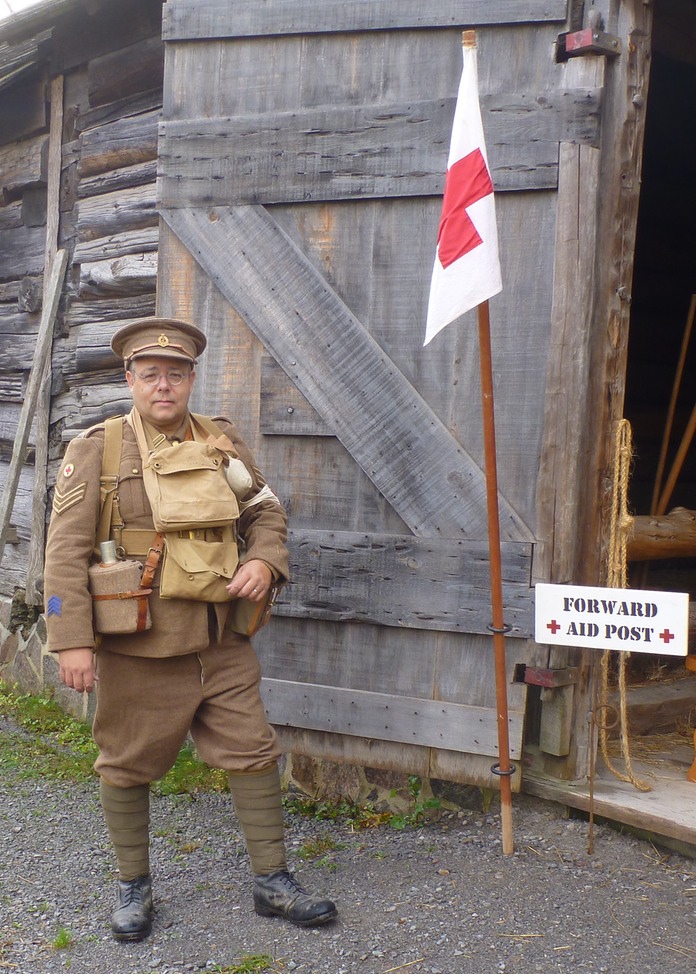
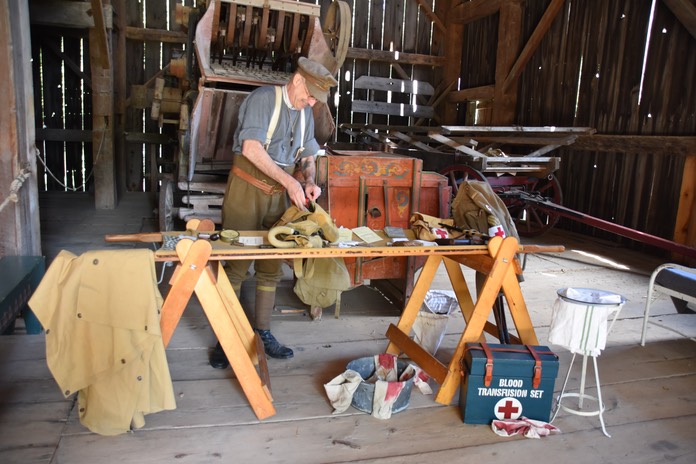
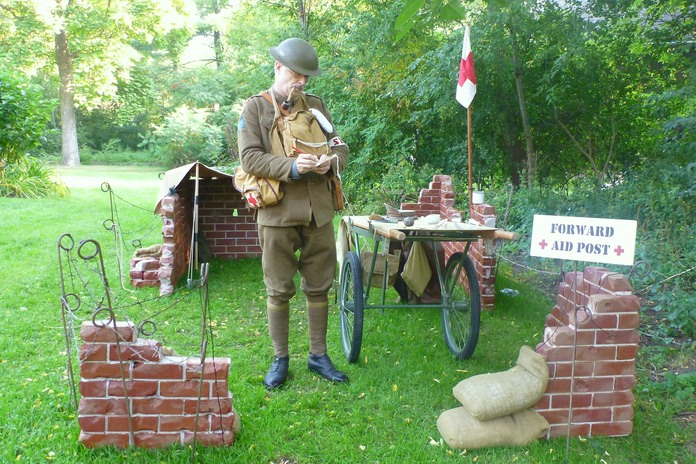
Underground Warfare - The Tunnellers' War
While battlefields rocked under massive artillery bombardments, and wave after wave of assaulting troops were cut down in their tracks by massed machine gun fire, an entirely different brand of warfare was taking place below ground. This called for specialist troops and exacting calculations.
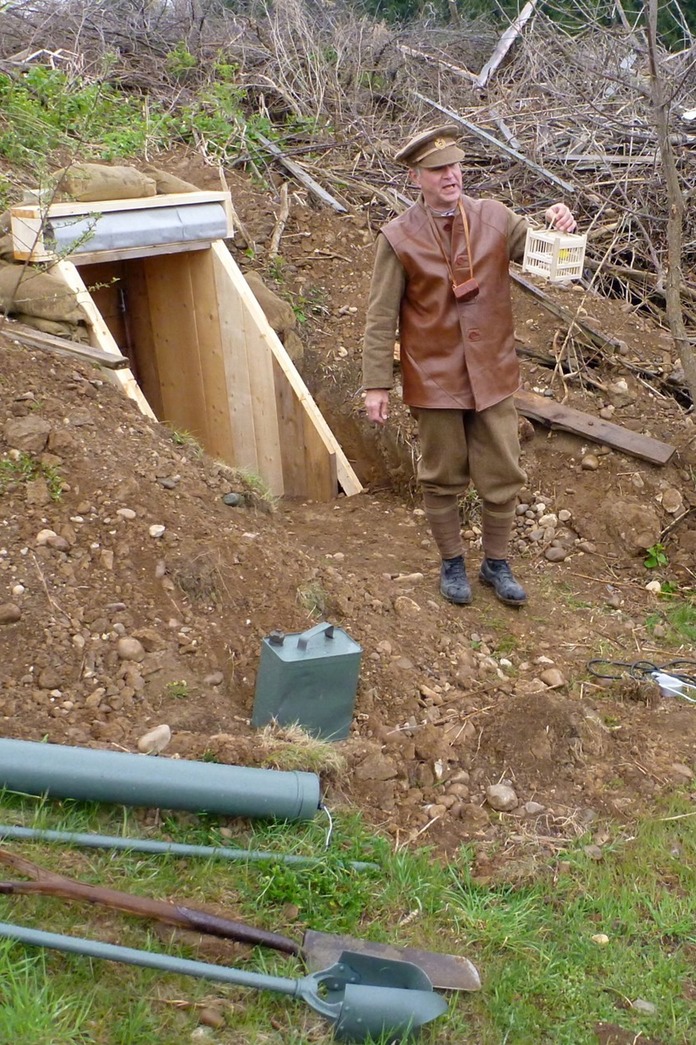
Military Chaplain
Stories from the life experiences of Canon Frederick Scott -- Senior Military Chaplain to the First Canadian Division of the Canadian Expeditionary Force in The First World War.


A Chaplain’s duties were not confined to behind-the-lines work only. Accounts document their presence on the battlefield in reorganizing shattered groups of stretcher bearers. They also performed a variety of tasks in the Casualty Clearing Station which was the Field Hospital of its day.
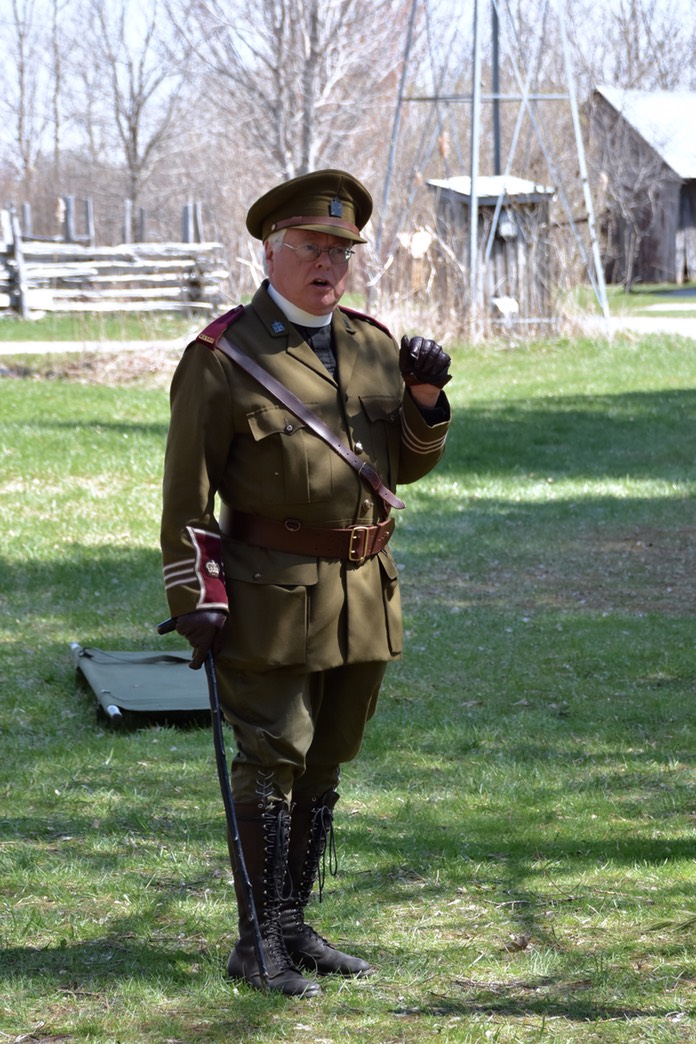
Sniper/Scout/Observer
The combined role of sniper/scout/observer was a challenging one. Patience, stealth, confidence, mastery of arms, and daring were all necessary components in this individual's skill sets.

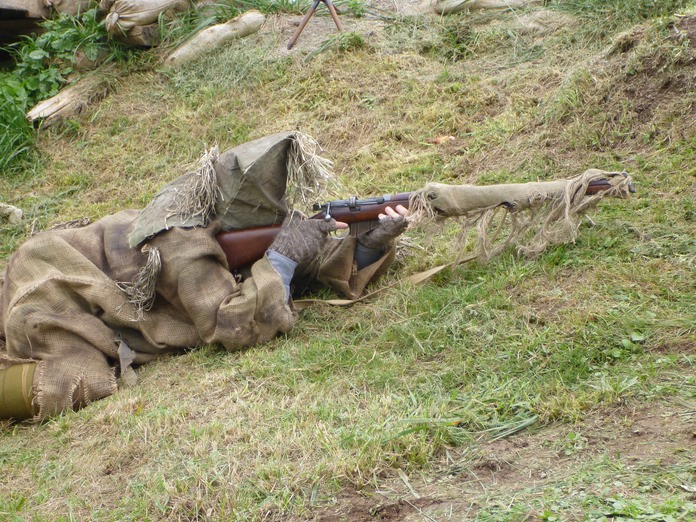
The German Soldier
This station provides perspective from the other side of No Man's Land. The German soldier underwent extreme changes in training and tactics from the start of the war in 1914 until its conclusion in 1918.

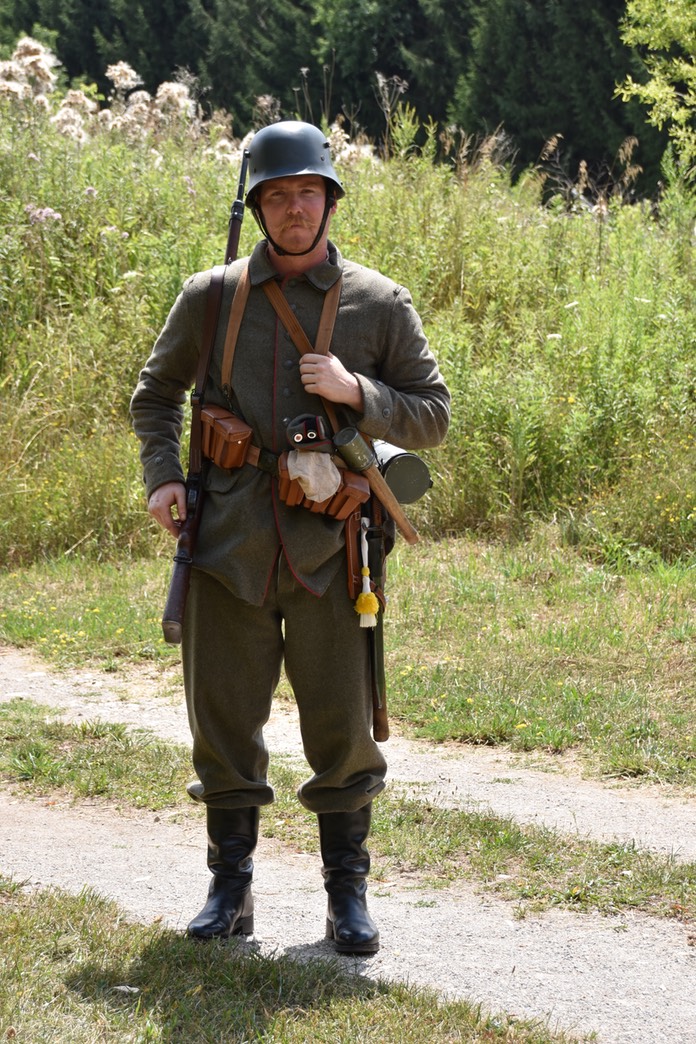

The Role of Women in WWI / Life on the Home Front
Many challenges presented themselves on the home front. Countless women contributed to the war effort. Knitting, rationing, working in munitions, supporting their loved ones overseas… the list goes on.


Feeding the Soldier
This station allows for a close examination of how Canadian soldiers of WWI were fed. Types of food available as well as methods of field cooking and ration transport are examined.
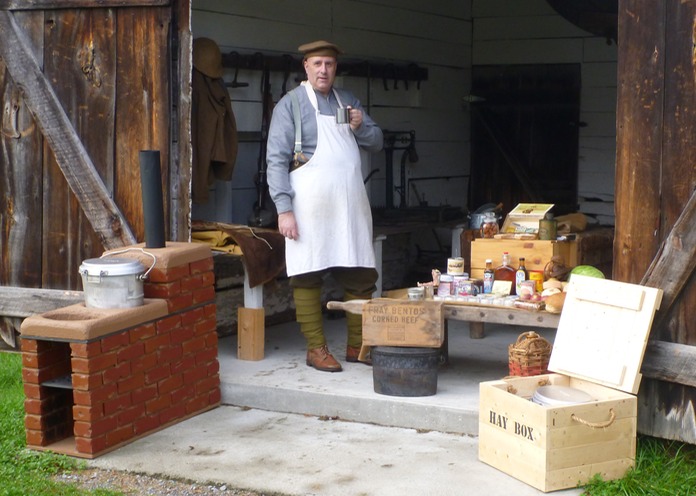

Munitions Worker
To fuel the massive needs for war materials each nation relied heavily on its industrial capacity. Tens of thousands of women worked in munitions factories in order to produce the ammunition and explosives required to meet the ever increasing demands. Some of these women received the nickname "Canary" since working with certain types of high explosives poisoned them and caused their skin to turn yellow just like canary birds. Industrial accidents happened. Factories exploded and women were killed outright or faced a lingering death following lengthy exposure to toxins and hazardous materials such as asbestos.


Work Detail
Under cover of darkness was the ideal time to carry out trench repairs or to string barbed wire obstacles. Sound easily carried across No Man's Land and any breach in noise discipline could draw down enemy fire. Learning to work efficiently yet quietly was a life saving necessity.
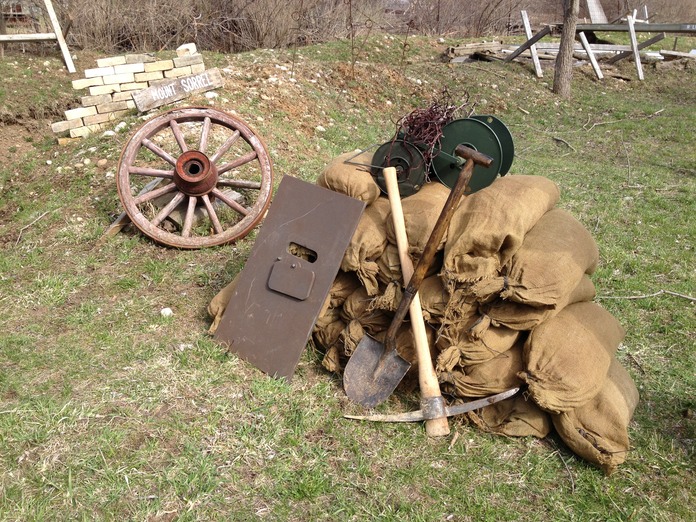

The French Poilu
The soldiers of France endured the brunt of the fighting on the Western Front from start to finish. France was the first nation to adopt a steel helmet for its troops. This station provides a glimpse at the French soldier along with his uniform and equipment.
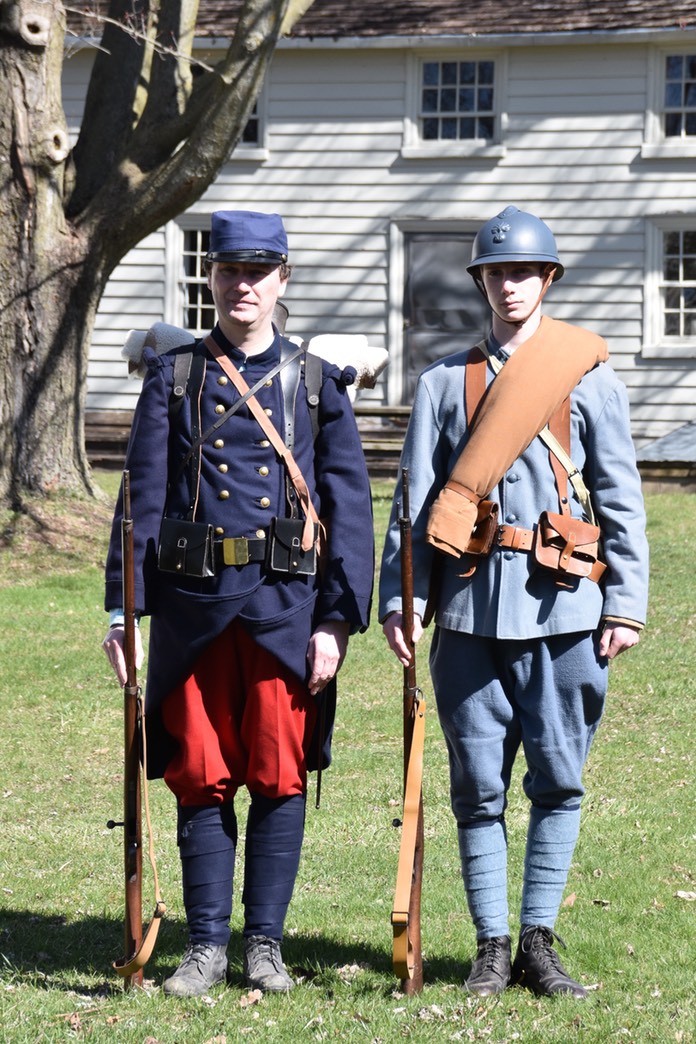



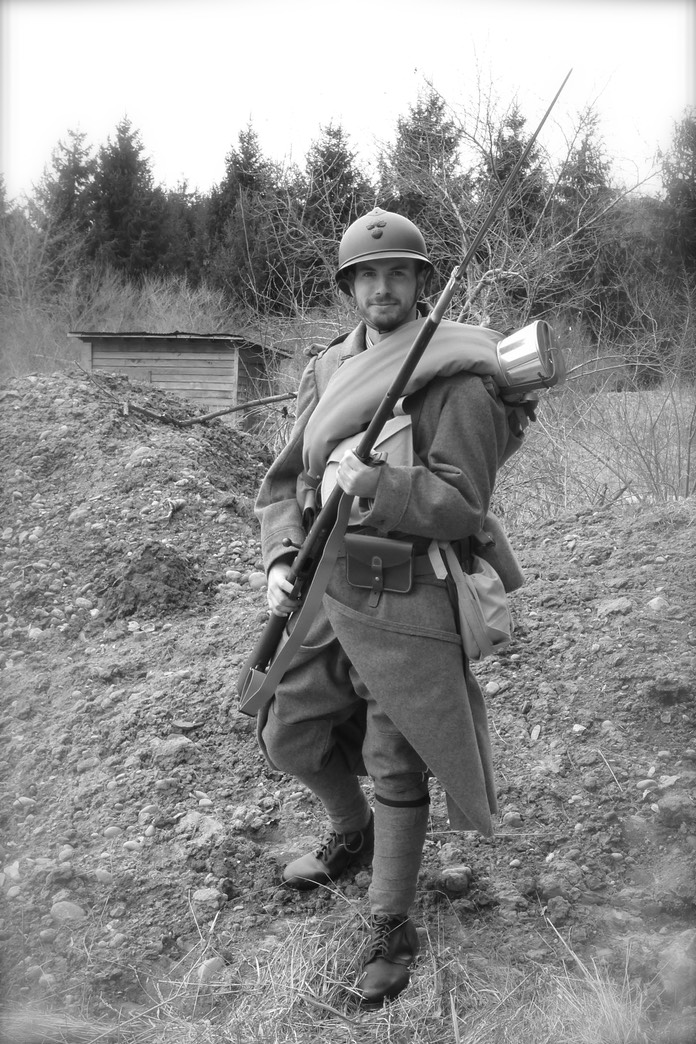
March to Verdun - 1916
Verdun was a battle of attrition in which the German army attempted to bleed the French army white. Students take on the role of French reinforcements marching to the front. On their way they encounter sniper fire, an artillery bombardment, difficult terrain, barbed wire obstacles, machine gun fire, and gas attack.

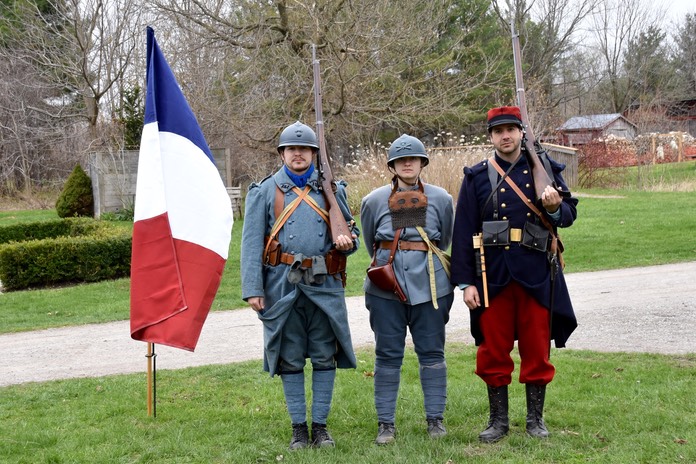


Canadian Cavalry Farrier
A farrier was responsible for maintaining cavalry equipment and ensuring that horses hooves were cared for and properly shod. Actual WWI artifacts feature as props in this station.


German Roadblock
Students pass through a German roadblock where they are warned to avoid the nearby mine fields. The meagre possessions of Belgian refugees are given a thorough going-over by suspicious soldiers.


Voluntary Aid Detachment (Delousing / Bath House / Laundry Service)
Members of the Voluntary Aid Detachment - the VADs - were unpaid volunteers serving with the British army. There were numerous rolls filled by VAD personnel. Some served as ambulance drivers or dispatch riders on motorcycles. Others worked in hospitals helping tend to the many wounded and sick. Still other VADs served as cooks and laundresses.
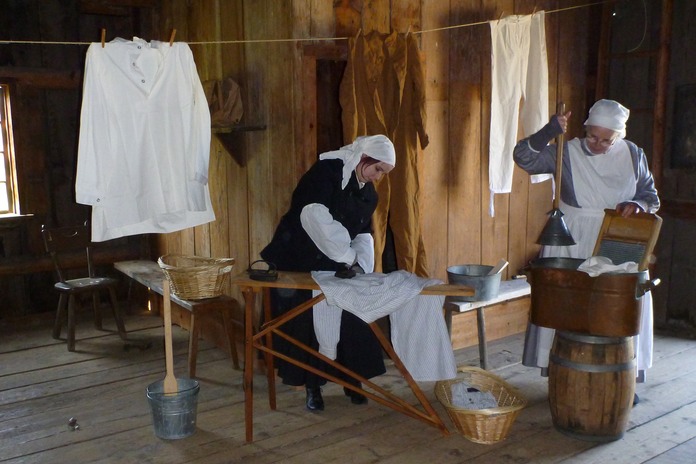
Booby Traps
In the late second half of the war Canadian tunnellers were called upon to apply their knowledge of explosives in dealing with thousands of booby traps left behind by the German army as it withdrew from previously held positions.
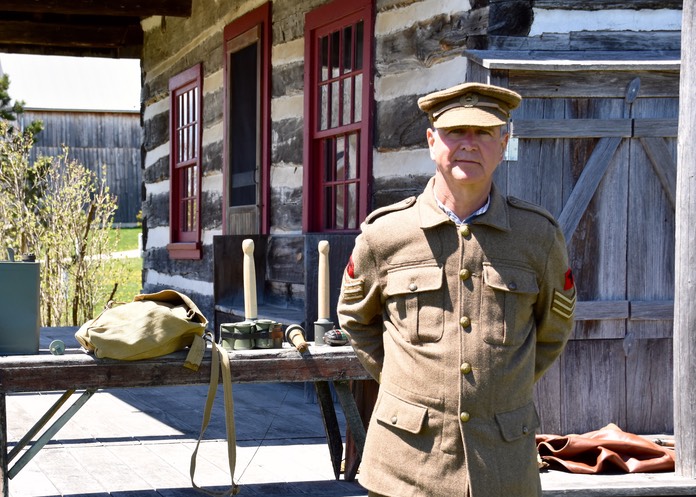
German Stormtrooper
German Stormtroopers were trained in special assault tactics.
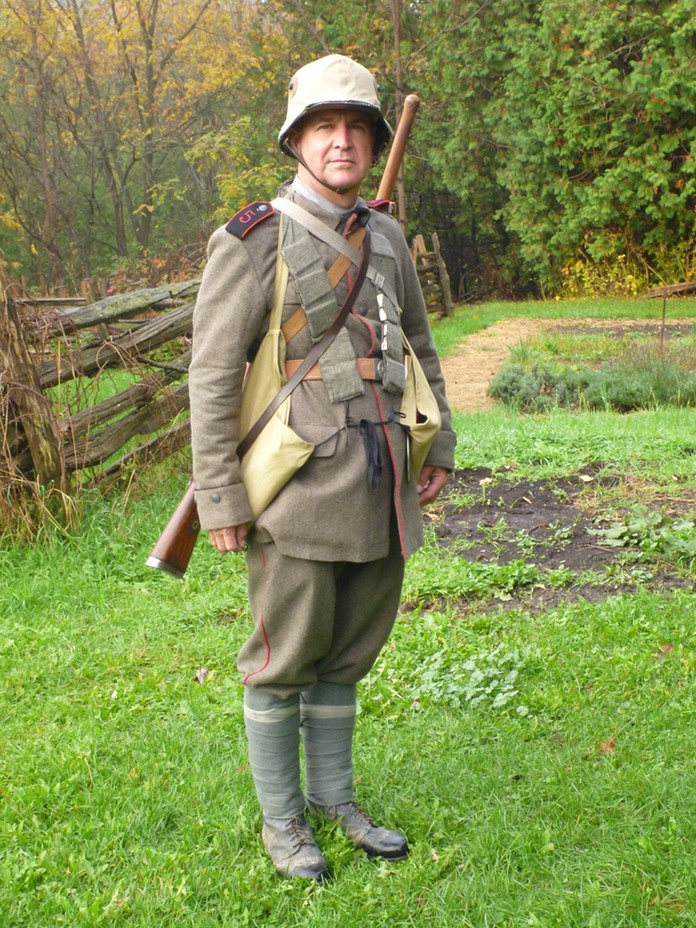
Battle School
Students learn to negotiate battlefield obstacles such as (rubber) barbed wire as they press home their attack under the watchful eyes of their instructors. Wooden replica rifles and light machine guns along with hand grenades are utilized here.

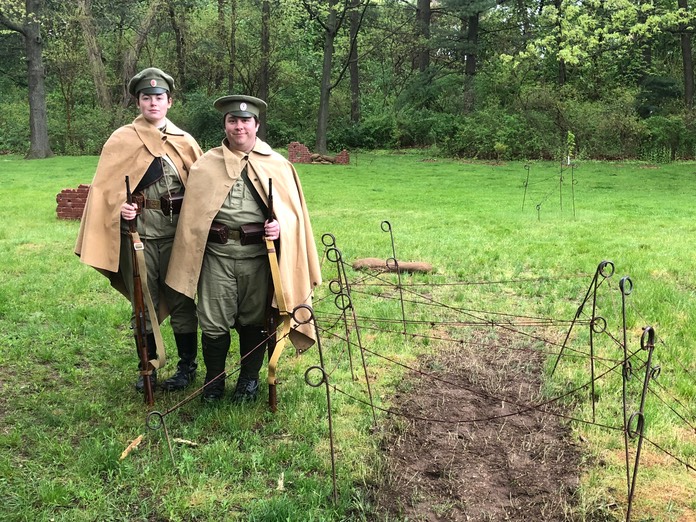


Battlefield Assault
Students participate in a carefully choreographed battlefield assault which is accompanied by realistic battlefield sounds and other special effects.




Commonwealth War Graves Commission
Following demobilization after the armistice in 1918 this Veteran of the Great War was hired by the Imperial War Graves Commission as a stone mason. The commission was responsible for constructing 2,400 cemeteries and identifying some 587,000 known dead as well as 559,000 unidentified dead. Simplicity, equality and uniformity were the guiding principals of the Commission as it struggled to produce 600,000 tombstones in a reasonable amount of time. Apart from the quarrying and shaping of the stones, there was the question of engraving details needed for each stone. A skilled stone mason was capable of carving one headstone per week.

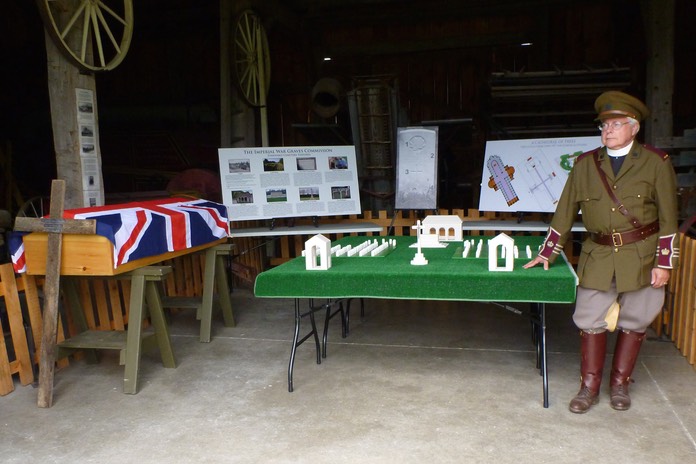
Regimental Medical Officer
During battle the Regimental Medical Officer would be located as near to the front lines as possible. He could set up shop in a battlefield crater, a dugout, or perhaps even a bombed out building. His job was to quickly and efficiently control any bleeding and to organize the evacuation of wounded from the battlefield where more advanced medical treatment would be available. This officer continued to train his stretcher bearers in life-saving techniques far surpassing that of basic first aid knowing that he himself could very well become a casualty of war at any moment.

Military by Design
This station contrasts and compares items of uniform and equipment used by four nations involved in The First World War. Great Britain, France, Germany, and Russia. Equipment may have served a similar purpose but varied greatly in design and functionality.
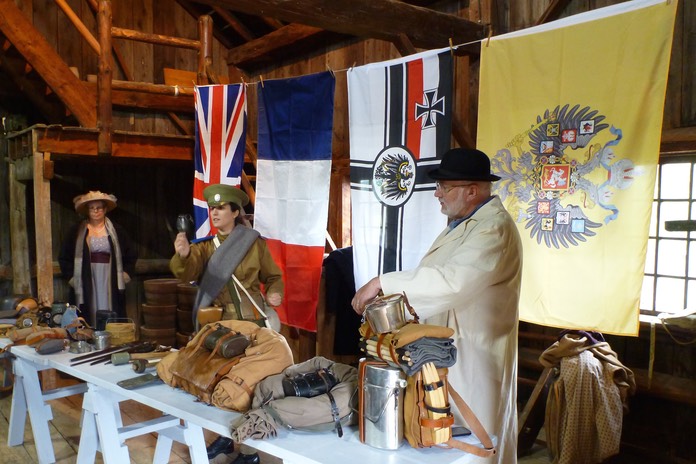

Belgian Refugees
Thousands of Belgian refugees fled to Britain and neigbouring Holland during WWI. Belgian communities were established in England which featured schools and hospitals. Many Belgian men worked in munitions factories as a way to contribute to the war effort.
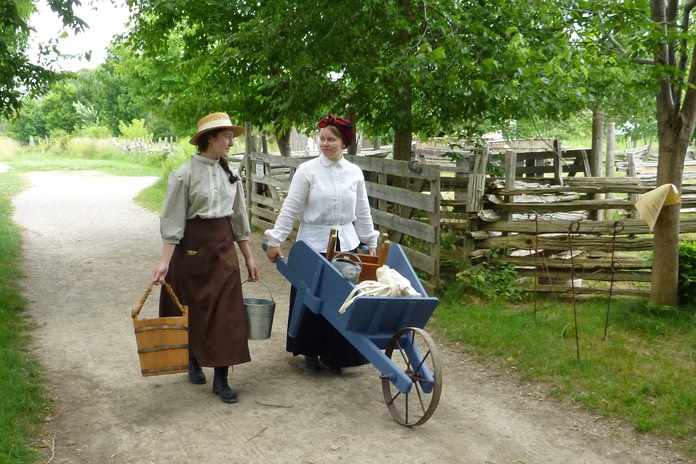
Russian Women’s Battalion of Death
The 1st Petrograd Women’s Battalion of Death was formed in 1917. It consisted of Russian women who wanted to fight for their country during The First World War. Elite male officers were selected to bolster the leadership in this unit.

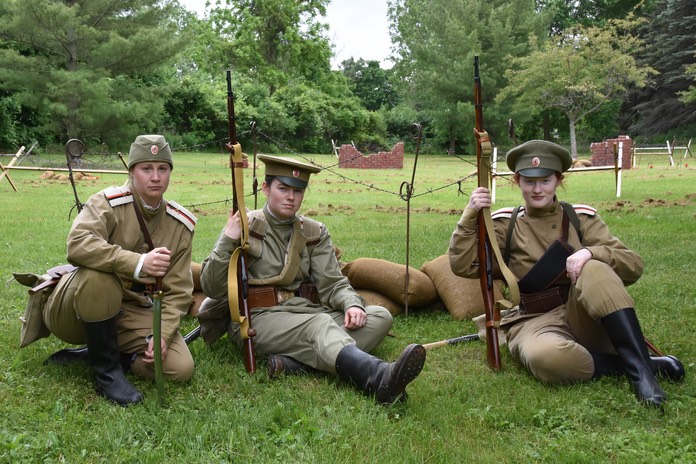

French Estaminet
An estaminet was a family run cafe operated behind the lines. This establishment was run by a proprietress and offered a place where off duty soldiers could purchase food and beverages to supplement their meagre and repetitious diet of army rations. Sundries such as cheese, postcards, and tobacco could also be purchased. Our estaminet is the Chemin des Dames which has a colourful history of its own.

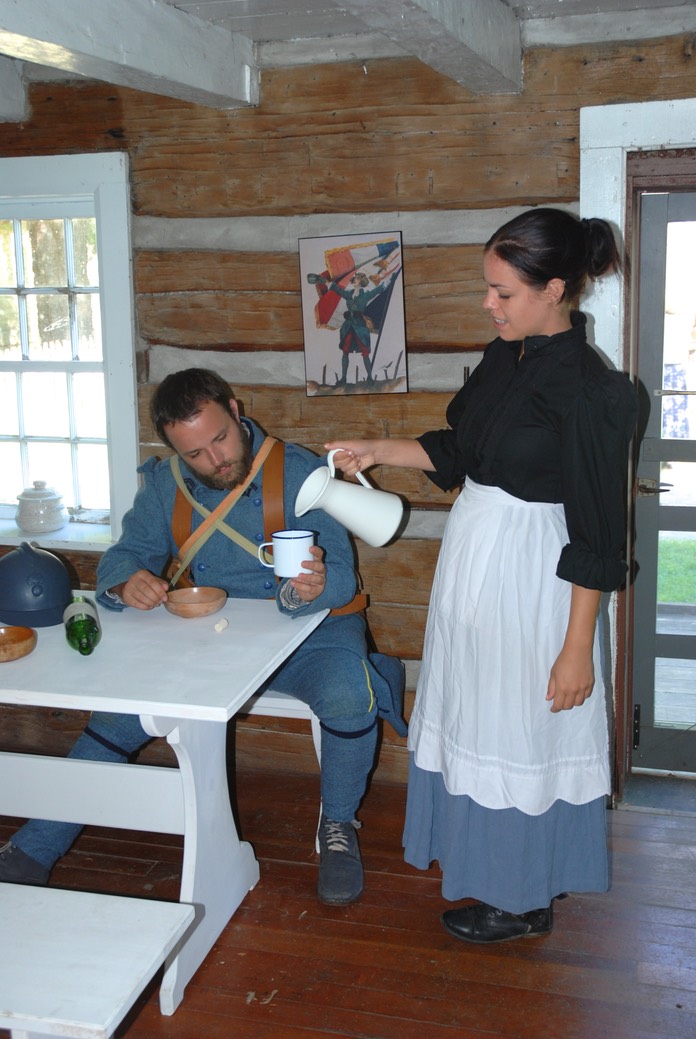

The 11th Swiss Rifles
Switzerland faced unique situations due to its official status of neutrality during The Great War. Carefully guarding its borders against hostile forces seeking to exploit access against an enemy’s flank was only one of these challenges.
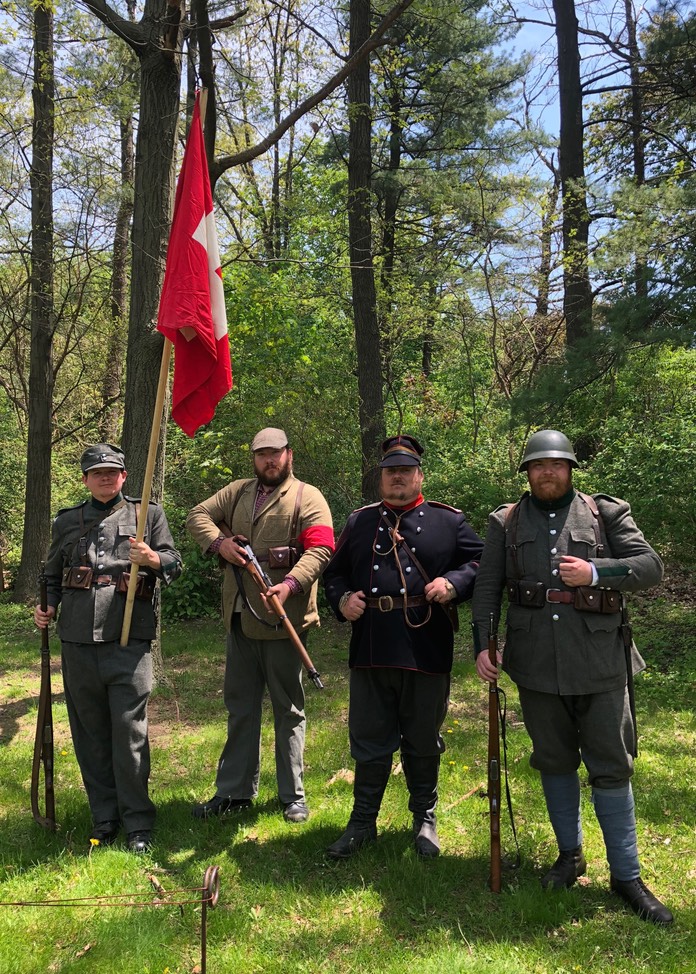

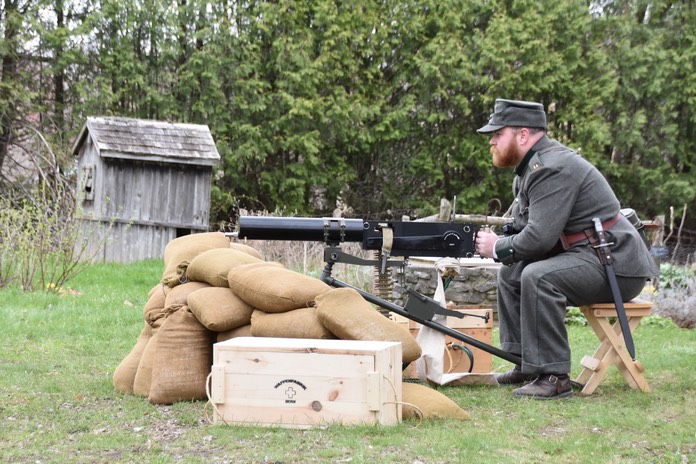
The Women’s Land Army / Farmerettes
The war left many vacant positions in agriculture and the forest industry. The Women’s Land Army (Britain), and the Farmerettes (Canada) stepped in to ensure that national needs would continue to be met.

Cavalry Lance Drill
Early war cavalry rode off to war with the lance as one of its principal arms. Students are put through their paces in basic lance drill.


The 1st Hussars / Canadian Cavalry in The Great War


The Famous Five
This dramatic narrative involves five famous Canadian women who actively sought the right for women to vote, and is a story well worth the telling.

Bayonet Training
Close quarters combat drill.
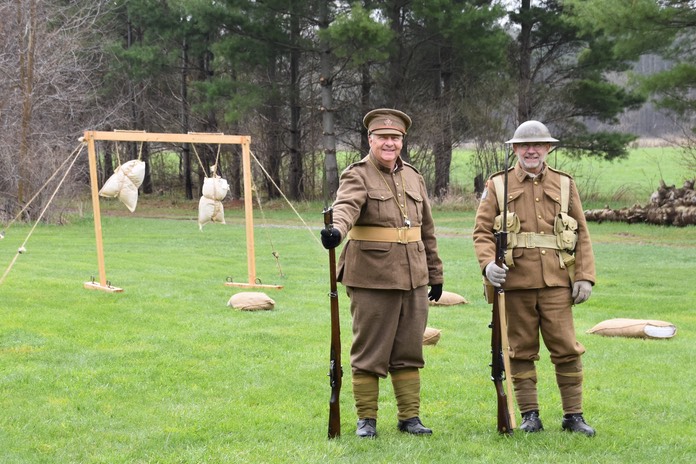

WWI Armour - Introducing the TANK
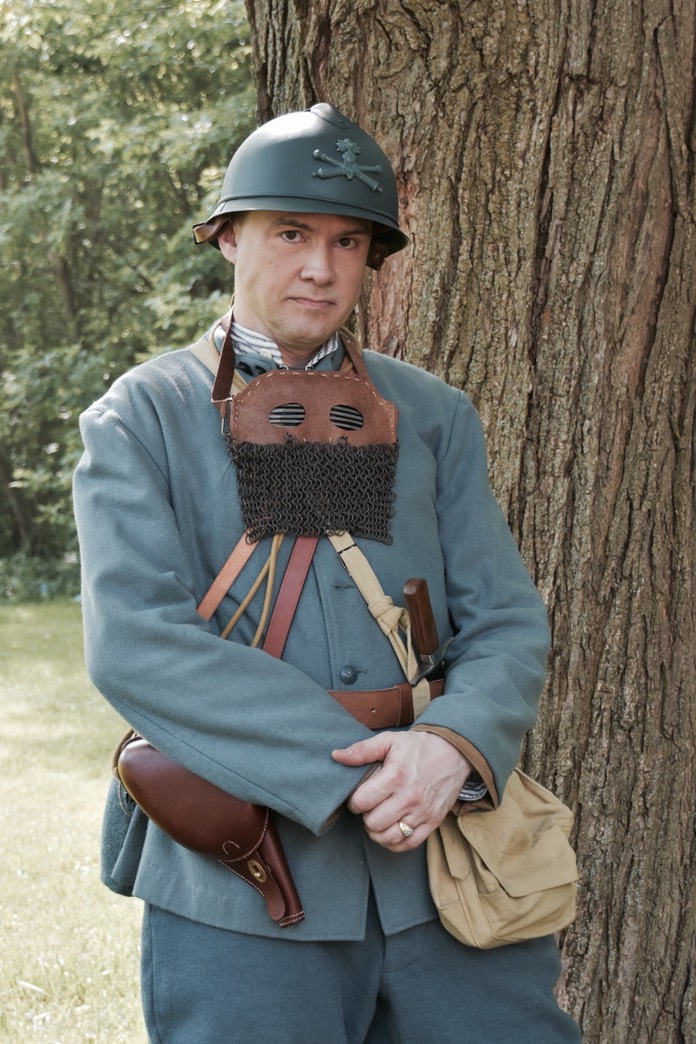
French tank crewman. Chainmail mask was worn against injuries caused by metal fragments becoming dislodged within the tank when struck on the outside by enemy fire.
Other topics currently under consideration for future program development:
Infantry Weapons - Tools of the Trade
Aerial Reconnaissance
The Halifax Explosion
Women in Espionage
Q Ship vs. U-Boat
Propaganda